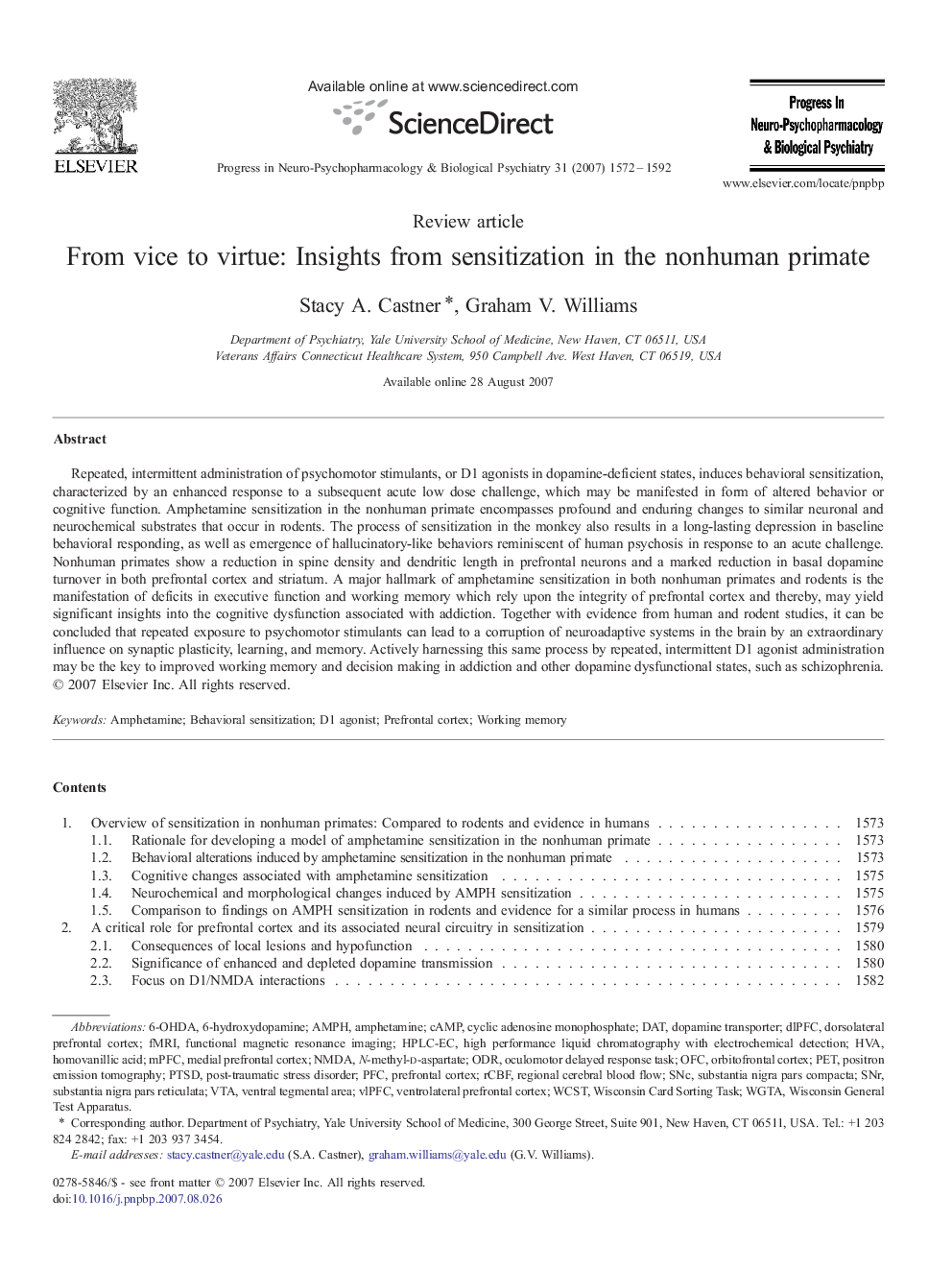| Article ID | Journal | Published Year | Pages | File Type |
|---|---|---|---|---|
| 2566264 | Progress in Neuro-Psychopharmacology and Biological Psychiatry | 2007 | 21 Pages |
Repeated, intermittent administration of psychomotor stimulants, or D1 agonists in dopamine-deficient states, induces behavioral sensitization, characterized by an enhanced response to a subsequent acute low dose challenge, which may be manifested in form of altered behavior or cognitive function. Amphetamine sensitization in the nonhuman primate encompasses profound and enduring changes to similar neuronal and neurochemical substrates that occur in rodents. The process of sensitization in the monkey also results in a long-lasting depression in baseline behavioral responding, as well as emergence of hallucinatory-like behaviors reminiscent of human psychosis in response to an acute challenge. Nonhuman primates show a reduction in spine density and dendritic length in prefrontal neurons and a marked reduction in basal dopamine turnover in both prefrontal cortex and striatum. A major hallmark of amphetamine sensitization in both nonhuman primates and rodents is the manifestation of deficits in executive function and working memory which rely upon the integrity of prefrontal cortex and thereby, may yield significant insights into the cognitive dysfunction associated with addiction. Together with evidence from human and rodent studies, it can be concluded that repeated exposure to psychomotor stimulants can lead to a corruption of neuroadaptive systems in the brain by an extraordinary influence on synaptic plasticity, learning, and memory. Actively harnessing this same process by repeated, intermittent D1 agonist administration may be the key to improved working memory and decision making in addiction and other dopamine dysfunctional states, such as schizophrenia.
